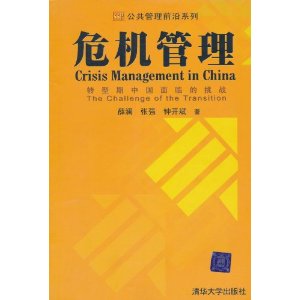Call for Papers
a special issue on ten-year anniversary of the 2008 Wenchuan Earthquake in Disasters
Learning from Disasters: Exploring the Mechanism of Disaster Induced Institutional Change
By Lan XUE and Xiaoli LU
Center for Crisis Management Research, School of Public Policy and Management, Tsinghua University
The 2008 Wenchuan earthquake affected some 46.25 million people in 417 counties in 10 provinces, such as Chongqing, Gansu, Shaanxi, and Sichuan, and Shaanxi. Notably, 69,227 people were killed, 17,923 were missing, and 6 million houses in rural areas and 102 million square metres of housing stock, critical infrastructure, and public facilities in urban areas were completely destroyed, amounting to a total economic loss of CNY 845.1 billion (or USD 121 billion). The affected area is approximately 500,000 square kilometres in total, with exceptionally heavily and heavily hit areas including spanning roughly 130,000 square kilometres of exceptionally heavily and heavily hit areas (Yong and Booth 2012).
After this major earthquake, China has demonstrated its efficiency in reconstructing earthquake impacted regions (Zhong and Lu 2017). Meanwhile, the national emergency management system has drawn lessons from the experience of the earthquake response and recovery, leading to institutional/organizational changes and reforms in the subsequence years (Lu and Xue 2016, Zhang and Tong 2016). However, it is not denied that some challenges remain unchanged due to various constraints in the system (Zhang 2012, Zhang, Lu et al. 2015). This special aims to bring together experts in the field to critically review lessons learned from the earthquake, changes in the recent decade as well as remained challenges. We will consider papers relevant to the above general theme, and we especially welcome research papers addressing the following two topics:
1. Disaster induced learning. A major disaster usually provides a golden opportunity to re-consider existing policy and institutional arrangement, while failures in the disaster might trigger learning in the system. We encourage experts to further study different types of learning after the Wenchuan earthquake. It could be the learning based on the unique experience exposed directly to such a catastrophe, or organizational or policy process that aimed to learn the causes of the failures in the earthquake, or a reflection on new skills, competence, or temporary organizing process to handle emerging demands during the disaster response. Moreover, an examination of constraints that resulted in failures of crisis-induced learning is also welcomed.
2. Disaster induced changes. Learning after a disaster might not necessarily lead to a policy, institutional or organizational change. We encourage experts to critically review the change of various aspects of the emergency management system, including emergency plans, emergency preparedness, response and recovery, and explore structural, institutional and cultural factors enabling or constraining the changes.
In commemoration of the earthquake’s 10th anniversary, Tsinghua University’s Center for Crisis Management Research (CCMR) will sponsor this special issue. CCMR is a university-based institution for research, education and consultancy committed to the study of crisis management, which is founded in 2004. CCMR has been selected as one of the centers of excellence by Beijing Planning Office of Philosophy and Social Science and one of the six thinktanks sponsored by the National Science Foundation of China. Graduate researchers from CCMR have gone on to careers at top universities, prominent research and training centers, and government agencies. CCMR’s core faculty members have won key research grants from the National Science Foundation of China, National Planning Office of Philosophy and Social Science, Ministry of Education, Ministry of Public Health, State Administration of Work Safety, State Council’s Emergency Management Office, and other local agencies. Consultancy reports have been endorsed by Premiers, Vice Premiers, and other leaders. For further information on CCMR, please browse: http://ccmr.sppm.tsinghua.edu.cn/
• Important dates
Short Proposals submission: December 27, 2017
Please submit a short proposal (Max 1000 words) to Dr. Xiaoli Lu via luxiaoli@tsinghua.edu.cn (copy to wenchuan2018@126.com) outlining: the title of the paper, a short description of the contents of the paper; the research method and empirical materials to be used (if applicable); and name, affiliation, and contact information.
Proposal acceptance notice: January 7, 2018
1st Paper development workshop: at Sichuan University in Chengdu in late April, 2018 (TBA)
Final manuscript submission (including language editing): April 30, 2018
Reviews: May and June, 2018
2nd paper development workshop: at Iwate University, Japan, in the Middle of July, 2018 (TBA)
Revision and 2nd round review: July and August, 2018
Final editing: September, 2018
Anticipated final publication: October, 2018
• Guest editors
Dr Lan Xue, Professor and Dean at the School of Public Policy and Management, Chief Scientist of the Center for Crisis Management Research, Tsinghua University
xuelan@tsinghua.edu.cn
Dr Xiaoli Lu, Assistant Professor at the School of Public Policy and Management, Associate Director of the Center for Crisis Management Research, Tsinghua University
luxiaoli@tsinghua.edu.cn
References

网友评论 已有 0 条评论,查看更多评论»